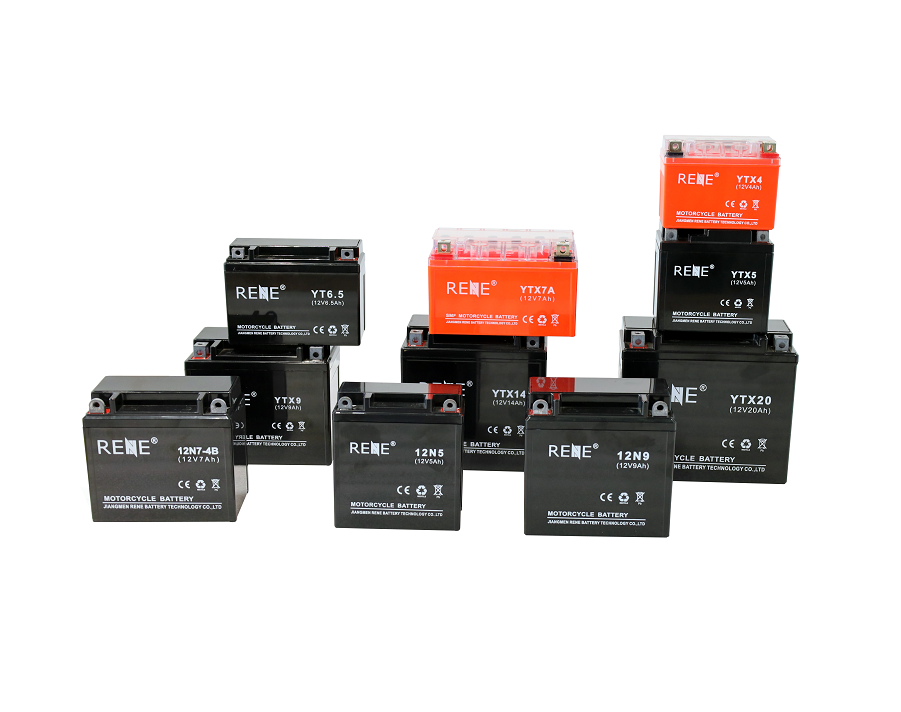Jiangmen Rene Battery Technology Co., Ltd.
Exploring Key Features of the Best Off-Grid Solar Battery Banks
2025-06-04
Exploring Key Features of the Best Off-Grid Solar Battery Banks Table of Contents 1. Introduction to Off-Grid Solar Battery Banks 2. Importance of Choosing the Right Solar Battery Bank 3. Key Features to Consider in Off-Grid Solar Battery Banks 3.1 Battery Capacity 3.2 Battery Types 3.3 Lifespan and Warranty 3.4 Charging Time an

Exploring Key Features of the Best Off-Grid Solar Battery Banks
Table of Contents
- 1. Introduction to Off-Grid Solar Battery Banks
- 2. Importance of Choosing the Right Solar Battery Bank
- 3. Key Features to Consider in Off-Grid Solar Battery Banks
- 3.1 Battery Capacity
- 3.2 Battery Types
- 3.3 Lifespan and Warranty
- 3.4 Charging Time and Efficiency
- 3.5 Size and Portability
- 3.6 Safety Features
- 4. Installation Considerations for Off-Grid Systems
- 5. Maintenance Tips for Longevity
- 6. Cost Analysis: Is It Worth the Investment?
- 7. Frequently Asked Questions
- 8. Conclusion
1. Introduction to Off-Grid Solar Battery Banks
As the demand for sustainable energy solutions continues to grow, off-grid solar battery banks have emerged as a popular option for those seeking energy independence. These systems allow users to store solar energy generated during the day for use at night or during periods of low sunlight. In this article, we will explore the critical features that make the best off-grid solar battery banks an excellent investment for your energy needs.
2. Importance of Choosing the Right Solar Battery Bank
Choosing the right solar battery bank is crucial for maximizing your off-grid solar system's efficiency. **The right bank not only influences your energy storage capacity but also affects the overall performance of your solar installation**. A carefully chosen solar battery bank can reduce reliance on the grid, lower energy costs, and provide peace of mind during emergencies.
3. Key Features to Consider in Off-Grid Solar Battery Banks
When selecting an off-grid solar battery bank, several key features must be considered to ensure optimal performance and reliability.
3.1 Battery Capacity
The capacity of a solar battery bank is measured in kilowatt-hours (kWh) and indicates how much energy the bank can store. **A higher capacity means more energy can be stored, allowing you to power your appliances longer.** Consider your daily energy consumption when assessing your needs. For instance, if you use an average of 10 kWh per day, a battery bank with at least 15-20 kWh capacity would be advisable to accommodate for cloudy days.
3.2 Battery Types
There are several battery types available for solar use, including:
- **Lead-Acid Batteries**: The most common choice, these are available in flooded and sealed variants. While cost-effective, they require regular maintenance and have a shorter lifespan.
- **Lithium-Ion Batteries**: Known for their long lifespan and efficiency, lithium-ion batteries are lightweight and require less maintenance than lead-acid alternatives. However, they come at a higher price.
- **Nickel-Cadmium Batteries**: These are more durable and perform well in extreme temperatures but are rarely used due to their high cost and environmental concerns.
Each type has its pros and cons, and your choice will depend on your budget and energy requirements.
3.3 Lifespan and Warranty
The lifespan of your solar battery bank is crucial for long-term efficiency. Typically, lead-acid batteries last about 3-5 years, while lithium-ion batteries can last up to 15 years or more. **A warranty is a good indicator of a product’s reliability**, with longer warranties suggesting greater manufacturer confidence in their product. Look for warranties that last at least 10 years for peace of mind.
3.4 Charging Time and Efficiency
The charging time for solar batteries can vary widely depending on the battery type and size. **A more efficient battery will charge faster**, allowing you to utilize solar energy without long waits. Lithium-ion batteries typically charge quicker than lead-acid batteries. It’s also important to consider the depth of discharge (DoD) – how much energy can be used before needing a recharge. Batteries with a higher DoD can be more efficient, helping you maximize energy usage.
3.5 Size and Portability
The physical size of the solar battery bank can impact your installation and overall system design. **Consider where you plan to install the battery bank**. Some users may require portable options for easy transport, while others may need a more permanent solution. Ensure the size aligns with your space and accessibility needs.
3.6 Safety Features
Safety features are critical when selecting an off-grid solar battery bank. Look for options that include:
- **Overcharge and Over-discharge Protection**: Helps prevent battery damage and extends lifespan.
- **Temperature Regulation**: Protects against extreme heat and cold, ensuring optimal performance.
- **Fire Safety Certifications**: Ensures that the battery meets industry safety standards.
Investing in a battery that prioritizes safety can prevent accidents and provide peace of mind during operation.
4. Installation Considerations for Off-Grid Systems
Proper installation of your off-grid solar battery bank is essential for maximizing efficiency and safety. Here are some key considerations:
- **Location**: Install your battery bank in a cool, dry, and well-ventilated area to prevent overheating.
- **Professional Installation**: If you’re not experienced with electrical systems, consider hiring a professional to ensure safe and effective installation.
- **System Compatibility**: Ensure your battery bank is compatible with your solar panels and inverter system to maximize performance.
- **Accessibility**: Position your battery bank where it can be easily accessed for maintenance and monitoring.
Proper installation will contribute to the longevity and efficiency of your solar battery bank.
5. Maintenance Tips for Longevity
Maintaining your solar battery bank is crucial for prolonging its life and ensuring efficient operation. Here are some maintenance tips:
- **Regular Monitoring**: Check battery levels and performance regularly to catch any potential issues early.
- **Clean Connections**: Keep terminals and connections clean to prevent corrosion, which can affect performance.
- **Temperature Management**: Monitor the temperature where your batteries are stored, as extreme conditions can shorten their lifespan.
- **Follow Manufacturer Guidelines**: Adhere to the maintenance instructions provided by the manufacturer for optimal performance.
Routine maintenance can help you get the most out of your off-grid solar battery bank.
6. Cost Analysis: Is It Worth the Investment?
The cost of off-grid solar battery banks can vary significantly based on capacity, type, and brand. **While the initial investment may seem high, consider the long-term savings in energy costs** and the benefits of energy independence. Calculate potential savings from reduced grid reliance and the value of renewable energy.
When evaluating costs, consider the following factors:
- **Initial Purchase Price**: The upfront cost of the battery bank.
- **Installation Costs**: Professional installation fees if required.
- **Potential Savings**: Projected savings on energy bills and maintenance over time.
- **Resale Value**: Consider the potential resale value of your system should you decide to upgrade or move.
Ultimately, investing in a high-quality solar battery bank can pay off in long-term savings and sustainability.
7. Frequently Asked Questions
1. How long do off-grid solar battery banks last?
Most lead-acid batteries last around 3-5 years, while lithium-ion batteries can last 10-15 years or more.
2. What size solar battery bank do I need?
Determine your daily energy consumption and choose a battery bank that can store at least 1.5 to 2 times that amount to account for cloudy days.
3. Can I install a solar battery bank myself?
While some may choose to install their own systems, it is recommended to hire a professional if you are not experienced with electrical systems to ensure safety and proper installation.
4. Are lithium-ion batteries worth the extra cost?
Yes, lithium-ion batteries offer longer lifespans, better efficiency, and require less maintenance compared to lead-acid batteries, making them a worthwhile investment.
5. How do I maintain my solar battery bank?
Regularly monitor battery levels, keep connections clean, manage temperature, and follow the manufacturer’s maintenance guidelines to ensure longevity.
8. Conclusion
Investing in the best off-grid solar battery banks can significantly enhance your energy independence and sustainability efforts. By understanding the essential features, including battery capacity, type, lifespan, and safety features, you can make an informed decision that aligns with your energy needs and budget. Proper installation and maintenance will further ensure the efficiency and longevity of your chosen system, making it a valuable asset for years to come. Embrace the benefits of renewable energy and enjoy the freedom that comes with off-grid living.
Key words:
Previous Page:














